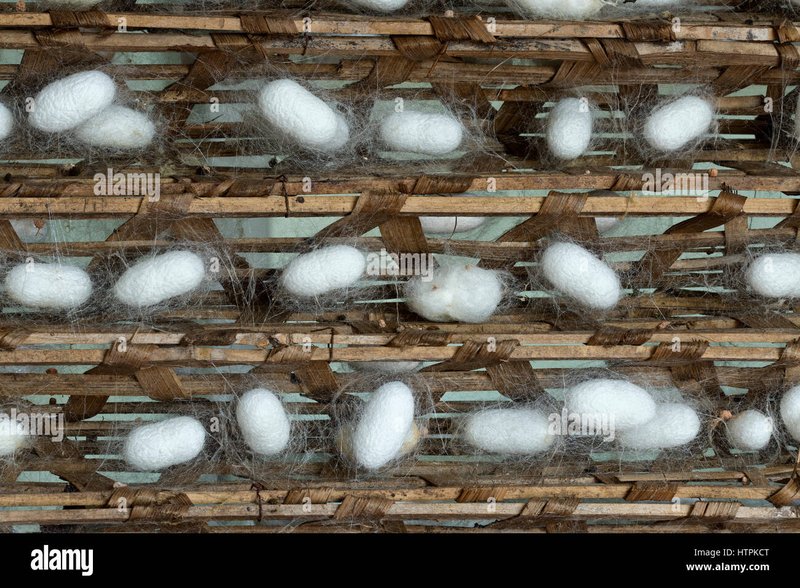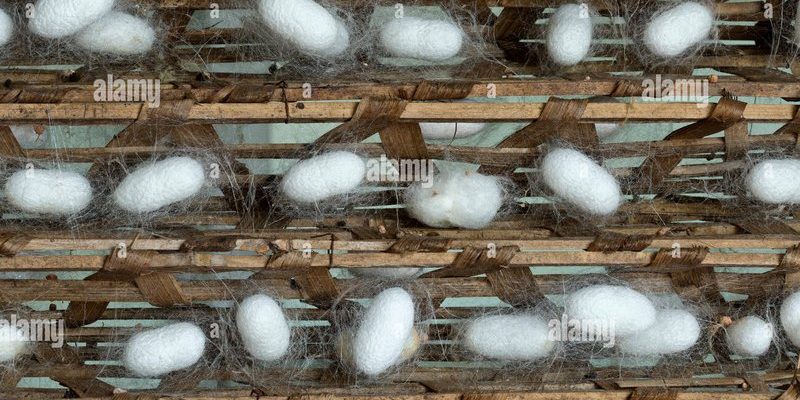
Let me break it down for you. Silkworms are the larvae of the domesticated silk moth, and they have a unique ability to produce silk. This process is like nature’s way of crafting a beautiful garment, and it’s pretty incredible when you think about it. So grab a cup of coffee, and let’s dive into the world of silkworms and the magic behind silk production!
Understanding the Silkworm Life Cycle
Before we get into how silkworms produce silk, it’s essential to understand their life cycle. Silkworms start as eggs, which hatch into larvae. These little caterpillars are incredibly hungry! They feast on mulberry leaves, growing quickly as they prepare for their silk-spinning stage.
As they munch away, they undergo several molts—shedding their skin to make room for their growing bodies. This phase is crucial as it allows them to store energy and nutrients needed for the next steps. Once they reach maturity, the silkworms are ready to begin their transformation into moths. But instead of just flying away, they have an important job to do first: produce silk.
What Is Silk and Why Is It Valuable?
Silk is a natural protein fiber produced by silkworms, and it has been treasured for centuries. You might be wondering: what makes it so special? Well, silk is incredibly soft, lightweight, and has a natural sheen that makes it stand out from other fabrics.
Historically, silk was considered a luxury material, often reserved for royalty. Its strength and durability are quite impressive as well. Did you know that one thread of silk can hold up to eight times more weight than a similar-sized strand of steel? This makes silk not just beautiful but also surprisingly robust, adding to its allure.
Many cultures around the world still celebrate silk and its history. From ancient trade routes in Asia—known as the Silk Road—to modern-day fashion, silk holds a significant place in our world.
The Silk Production Process: Step by Step
Now, let’s get into the nitty-gritty of how silkworms produce silk threads. Here’s the step-by-step process:
1. **Spinning the Cocoon**: Once the silkworm has matured, it starts to spin a cocoon around itself using a special gland that produces silk. The silkworm releases a fluid that hardens upon exposure to air, forming long, continuous threads. This part of the process can take a few days as the silkworm spins around itself in circles, creating a protective casing.
2. **Harvesting the Cocoons**: After spinning, the cocoons are carefully harvested. It’s important to do this before the moths emerge, as the emerging process can break the silk threads. Farmers usually use hot water or steam to kill the pupae inside the cocoon.
3. **Reeling the Silk**: Once the cocoons are harvested, they’re soaked in hot water to soften the silk fibers. Then, the ends of the threads are carefully found and unwound from the cocoons. This process is known as reeling, and it results in long strands of silk that can be woven into beautiful fabrics.
4. **Processing the Silk**: The raw silk threads go through several treatments, including washing and dyeing, to prepare them for weaving. This is where the fabric begins to take on its stunning colors and textures.
From Cocoon to Fabric: The Art of Weaving Silk
After the silk has been collected and processed, it’s time to turn those delicate threads into fabric. This part is like a beautiful dance between the threads and the weaver. Different weaving techniques can create various patterns and textures.
– **Plain Weave**: This is the simplest technique, where the silk threads are woven over and under each other. The result? A smooth, flat fabric that’s perfect for clothing.
– **Twill Weave**: This method creates a diagonal pattern on the fabric, resulting in a textured look. It’s often used for furniture coverings or more durable silk garments.
– **Jacquard Weave**: Using a special loom, intricate designs can be woven into the fabric, making each piece unique. This technique was revolutionized by Joseph Marie Jacquard in the early 19th century.
Each weaving method can significantly change the appearance and feel of the silk fabric. It’s an art form that combines creativity and craftsmanship.
The Environmental Impact of Silk Production
While silk is a beautiful and luxurious fabric, it does come with environmental considerations. The traditional production process can impact biodiversity and the ecosystem if not managed sustainably. Here are a few aspects to think about:
– **Land Use**: Silkworms primarily feed on mulberry leaves, which require significant land and resources to cultivate. Over-farming can lead to land degradation.
– **Water Usage**: The process of reeling and washing silk requires a good amount of water, which can strain local water sources if not done responsibly.
– **Ethical Concerns**: There’s also the ethical debate about killing silkworms during silk harvest. While some producers are moving towards more humane methods, it’s a topic of ongoing discussion.
If you’re passionate about sustainability, consider looking for brands that prioritize eco-friendly practices in their silk production.
Alternatives to Traditional Silk
If you’re curious about alternatives, there are several options that provide the luxurious feel of silk without the environmental impact. Here are a few popular choices:
– **Synthetic Silks**: Fabrics like polyester and nylon mimic the look and feel of silk and are often more affordable. However, they don’t have the same breathability and natural properties as real silk.
– **Peace Silk**: Also known as “Ahimsa silk,” this method allows silkworms to complete their life cycle before harvesting the silk. It’s a more ethical option that has gained popularity among conscious consumers.
– **Plant-Based Fabrics**: Materials such as Tencel or cotton sateen can offer a soft feel while being more sustainable. These alternatives are perfect for those looking for eco-friendly clothing.
The Future of Silk Production
As we continue to learn more about sustainability and ethical practices, the future of silk production is evolving. Innovations are being made to minimize environmental impacts and ensure the welfare of the silkworms.
Many companies are exploring organic farming methods and integrating technology to streamline processes. Some even focus on regenerative agriculture, aiming to improve soil health and maximize biodiversity.
The journey of silk from little silkworms spinning their cocoons to the glamorous fabric we adore is a story of nature and craftsmanship. As consumers, we have the power to support sustainable practices that honor this age-old tradition while respecting our planet.
In conclusion, the process of how silkworms produce silk threads is a remarkable journey that intertwines nature and human creativity. From the lifecycle of the silkworm to the delicate threads woven into luxurious fabrics, it’s a fascinating world worth exploring. So the next time you admire a silk scarf or dress, remember the incredible journey behind it.

